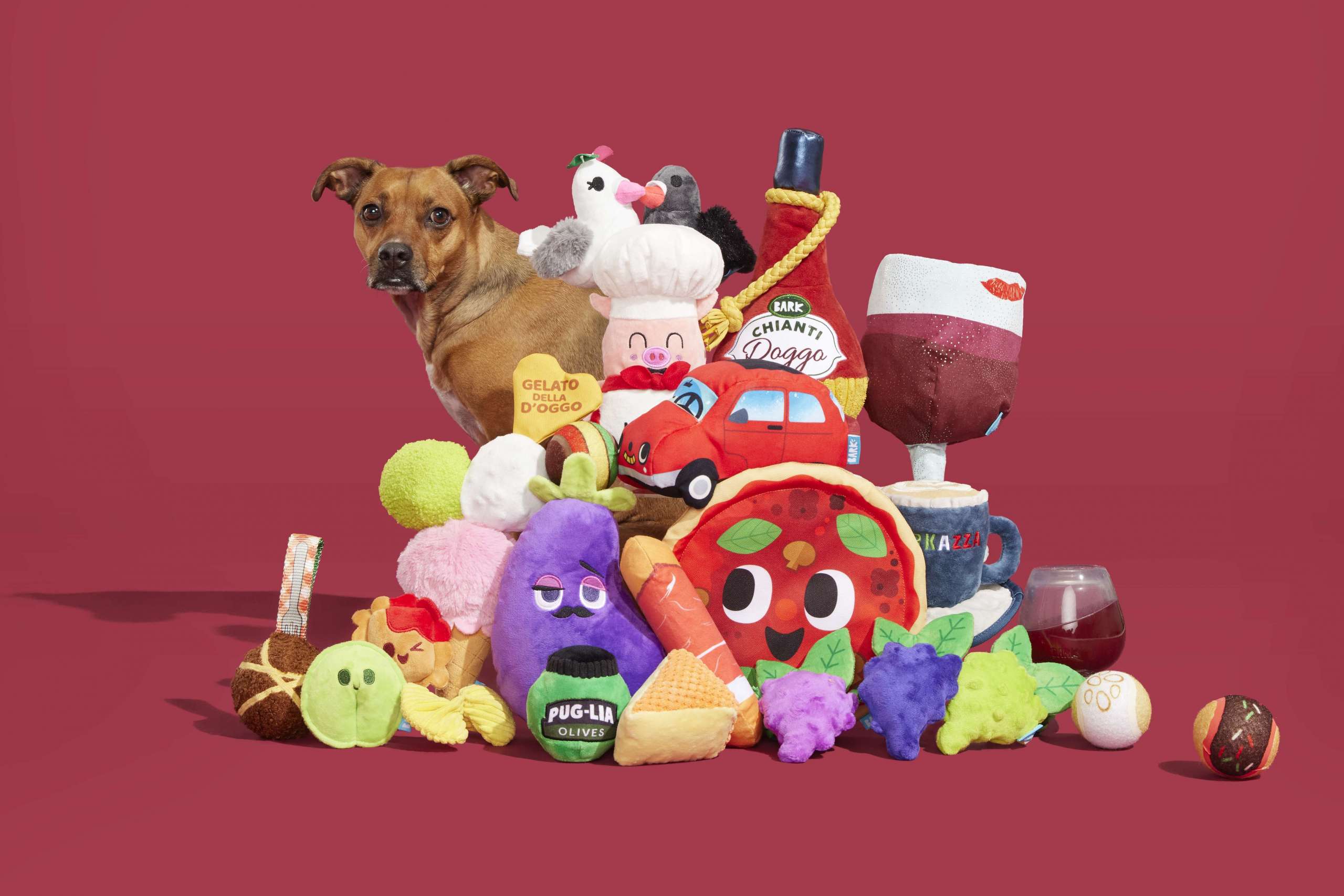Break out your Pom-Poms, this is a breed worth celebrating! These tiny, fluffy creatures sport a fox-like face and a feathered double coat in various colors including white, black, and red. The first thing you might notice about a Pomeranian is their small stature, but don’t be fooled, they’re sturdier (and louder!) than they look.
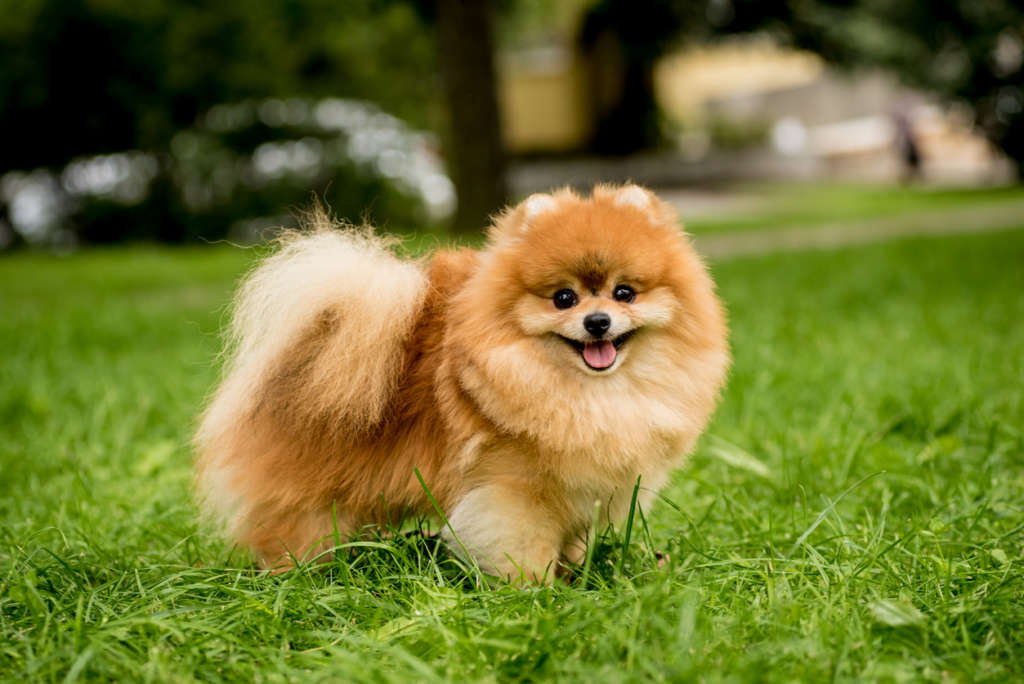

One of the dog breeds associated with royalty and fame, Pomeranians may look fit to be spoiled. However, they don’t demand a life of luxury – unlike Goldendoodles. They’re more than happy to keep just about anyone company, so long as you share a few treats with them. Perfect apartment dogs, this breed is more than comfortable in smaller spaces. So long as they’re with their favorite human, Pomeranians are game for just about anything.
Breed Overview
Pomeranians Are Also Known As…
Pom, Pom-Pom, Lou Lou, and several German variations, including the Deutscher Spitz, Zwergspitz, Dwarf Spitz, and finally, der Fluffmeister.
What Is The History Of The Pomeranian?
The ancestors of the modern Pom Pom go back to—you guessed it—Pomerania. Located in Northern Europe, the region spans northwest Poland and northeast Germany. The region is known for its rich history of Vikings, Romans, and the valiant medieval knights. In other words, the perfect breeding ground for a precious, toy-sized fluff. Or not. Bred over hundreds of years from larger “Spitz”-type dogs, the Pomeranian is a pint-sized shadow of its brawny, burly predecessors.
As the smallest entrants of the Central European Spitz breed, the fluffy Pomeranian attracted much attention from nobles and aristocrats worldwide. Notable figures including Marie Antoinette, Queen Charlotte, King George III, Isaac Newton, and Wolfgang Amadeus Mozart were known to own Pomeranians, contributing to their famed reputation.
By the late 19th century, Queen Victoria began breeding and exhibiting this toy dog in the UK. It was her interest and commitment to the breed that paved the way for the tiny, treasured pups known today.
After earning recognition from the American Kennel Club in 1888, the Pomeranian dog has spent more than 100 years winning competitions and expanding in popularity across the country. Pomeranians rank in the top 10 most popular dogs in several states and the top 25 nationally. It’s no surprise. With its undeniably sweet disposition and adaptability, this breed isn’t going anywhere.


How Big Do Pomeranians Get?
The Pomeranians are known for their small size. It makes them the perfect lap dog. This toy breed can grow up to:
Height: 6–7 inches
Weight: 3–7 pounds
How Long Do Pomeranians (Generally) Live?
Little dog, big life. Pocket-sized Pomeranians are expected to live 12 to 16 years.
What Is A Pomeranian’s Temperament & Personality Like?
There’s no getting around it—this breed just won’t quit when it comes to cuteness. Sure, Pomeranians may be able to act tough around other dogs from time to time, but mostly these are fluffy, playful pups that are constantly vying for the love and attention of their owners.
Like all dogs, Poms can be sensitive to new or unexpected situations. A neighborhood party, a new guest, or an exciting object could send your Pom Pom into a tizzy. If you notice your Pomeranian acting a little funny, give them time to adjust and try your best to make them feel comfortable and safe.
Do Pomeranians Bark A Lot?
The Pomeranian may be a small dog, but they do have a loud bark. How vocal your Pom is could depend on the scenario. Despite their adorable looks and miniature size, these good-natured pets aren’t afraid to assert their presence and make outstanding watchdogs, similar to the Shiba Inu dog. Although the Pomeranian breed may like to yip, yap, and bark when they ask for attention, they’re not prone to making noise unless they have a reason.
Keep track of your Pom’s social and exercise needs to minimize the barking. If you have neighbors nearby, you might want to offer them a set of earplugs as courteous pet parents.
Good With Kids? Cats? Dogs?
Poms are excitable and, with the proper training, can be especially fun around young children. Remember to educate small children about the appropriate way to handle and play with these family-friendly pets. Poms may look like stuffed animals, but these cuddly creatures are a bit more fragile.
Other animals tend to have a great time with their Pom friends, but there’s always the risk of injury when a Pomeranian plays with a larger dog breed. If you can, introduce all your pets as young as possible to develop strong bonds and loving relationships.
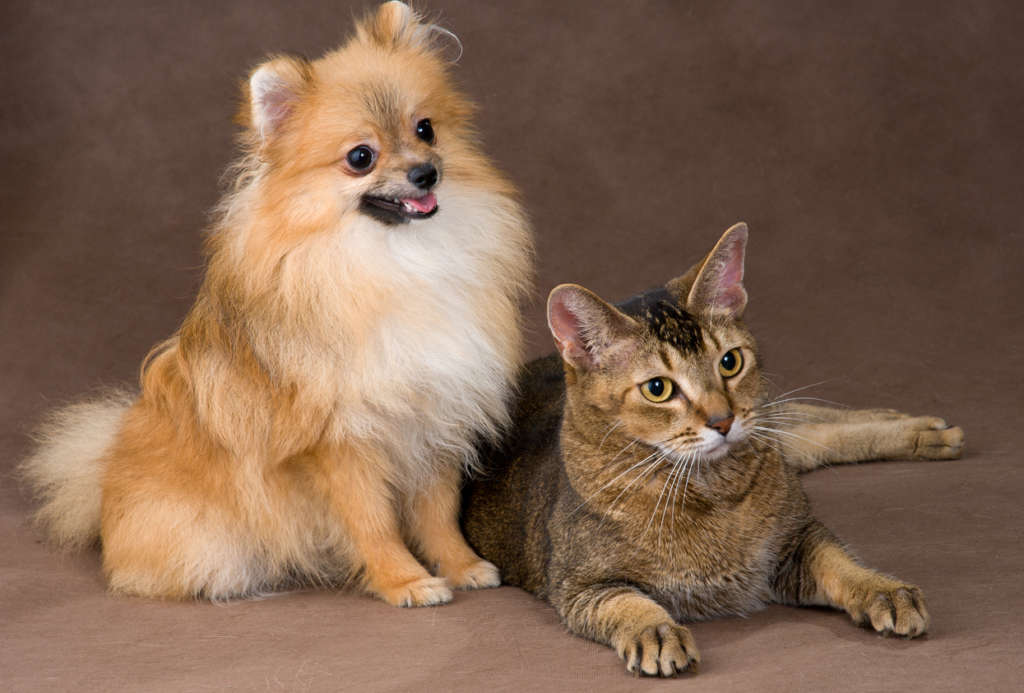

Do Pomeranians Need A Lot of Exercise?
Your Pom isn’t going to be dragging you around the block or leaving you winded in the dust. While physical activity is a must for all dogs, a little goes a long way with a Pom. These pups make natural lap dogs. You may need to consider the risk of over-exhaustion—and bring a proper carry-all—if you’re going for a particularly long walk.
Be sure to provide plenty of water for your Pom, especially on warm days or after physical activity. Additionally, if you let your Pomeranian outside unsupervised, keep them in a tightly fenced-in area, as these little pups can easily slip through cracks and crevices.
Are Pomeranians Hard To Train?
Poms make excellent therapy dogs as they’re eager to stay by their owner’s side and provide support nearly 24/7. With early leash and obedience training, you can teach your Pomeranian puppy proper behavior.
While highly intelligent, Poms can put up a fight when it comes to housebreaking. That said, it should only take some treats, positive reinforcement, and consistent behavioral training to ensure your pup does its business in the right place. Be aware that Poms can be little daredevils, jumping off of furniture and countertops. Supervision is a must, especially when your Pom is young.
Do Pomeranians Have Health Issues?
As with any dog, you’ll want to ensure your Pom receives preventive care and regular veterinary examinations.
Some common dog health problems for this breed include:
- Alopecia X – Also known as “coat funk,” this condition causes hair loss and other skin problems.
- Luxating patella – Poms with this inherited condition have kneecaps that slip out of place. Luxating patellas may be worsened by weight gain or trauma to the leg but can be corrected with surgery.
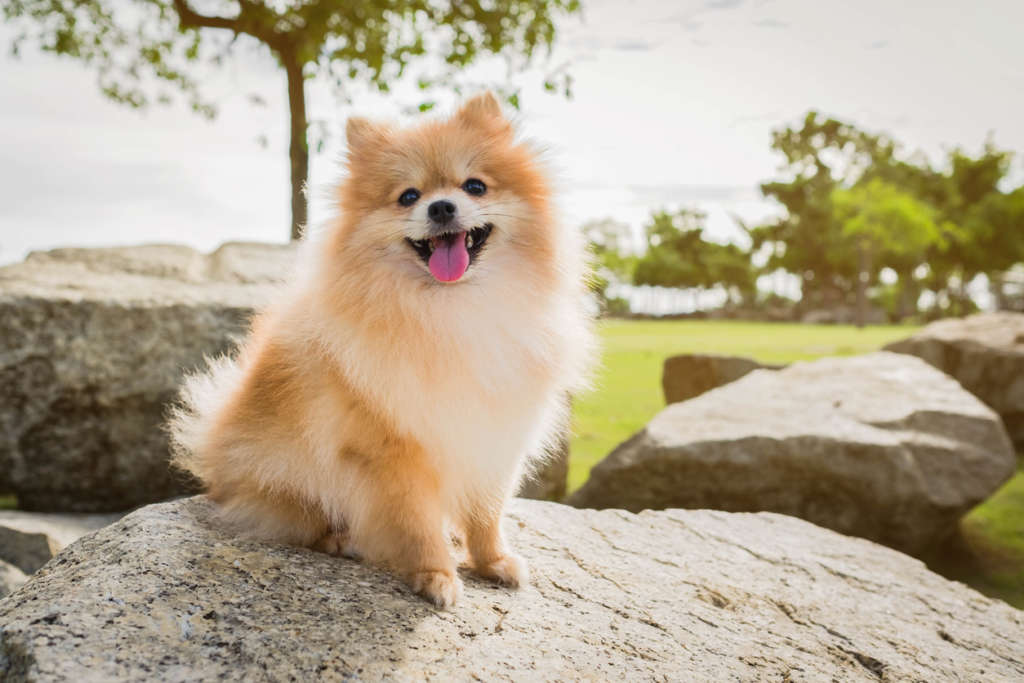

Do Pomeranians Need To Be Groomed?
What keeps these regal, fluffy pups looking so chichi? Plenty of grooming and care. However, you don’t need to be a professional to keep your Pom’s double coat looking lush. Just keep the following tools on hand:
- Pin brush
- Slicker brush
- Clippers
- Combs
- Shampoo
Don’t forget about regular teeth brushing, nail trimming, and ear cleaning. If you need extra help, you can take your Pomeranian to a local grooming service every 4 to 6 weeks. These former palace-dwellers are almost guaranteed to love a little primping.
Do Pomeranians Shed?
What do the Bernese mountain dog and Pomeranian have in common? Thick fur. With a thick double coat, Pomeranians are regular shedders. After all, they’re basically tiny fluff balls. Fortunately, Poms don’t drop as much hair as some breeds, and with regular TLC, you can minimize the fur floating around your house.
How Much Does It Cost To Care For A Pomeranian?
The bill for bringing home your little beauty can stretch from $300 to $1000. That’s not including the basic needs budget, which could range from $80 to $150 a month on average. You can expect your first year to be more expensive than subsequent years, as that’s when you’ll invest in many of the essentials that will keep your BFF happy and healthy for the years to come.


Dog Food
Pomeranians may have big personalities, but these little guys are mostly fluff—so don’t expect a massive appetite from your tiny pup. Poms typically only need ⅓ to 1 cup of kibble per day, adding up to around $15–$40 per month.
Looking for a meal designed especially for your Pomeranian? BARK Eats delivers the best in customized, pre-portioned dog food straight to your door. Formulated by veterinary nutritionists, BARK Eats makes mealtime easy and delicious. Order today and get 50% off your first month!
Routine Vet Care (Healthy Dog)
When budgeting for your Pom, be sure to factor in regular vet appointments. Typically, a standard examination will cost at least $50, but that doesn’t include testing (including bloodwork or x-rays) or treatment. Additionally, you may request genetic health pre-screening for your new pup, ranging from $60 to $200.
Preventative Medications for Pomeranians
Vaccinations, heartworm treatments, and parasite prevention are standard across all breeds. Expect to spend $100 to $200 every year to keep your Pom as fit as can be.
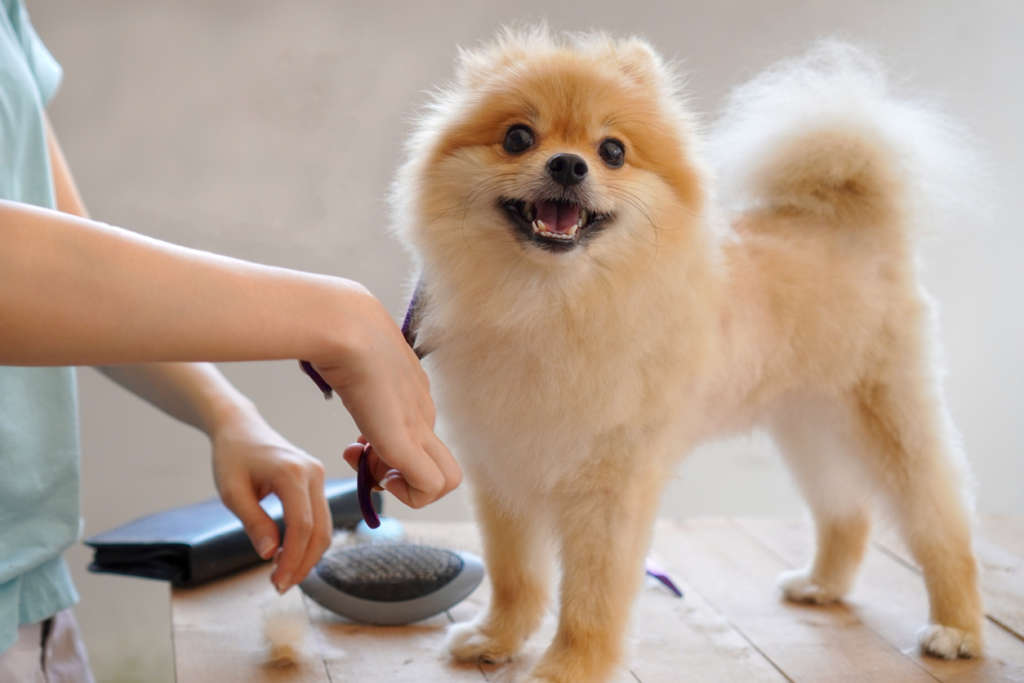

Pomeranian Grooming
Brushes, shampoos, and other grooming tools can add up. Most Pom owners will spend $40 to $100 in their first year purchasing the accessories necessary to keep their Pom’s coat soft and healthy.
Professional grooming can range from $60 to $200, depending on the services you require. From baths to coat blowouts, groomers can offer everything you need to keep your pup looking fresh, clean, and fluffy.
Toys, Treats, Beds, & Accessories
Don’t hesitate to spoil your Pomeranian with toys and treats from the moment you bring them home. Your Pom might appreciate a squeaky chew, a stuffed animal, or an engaging food puzzle. Plus, you can outfit them in various super cute puppy clothes, with matching leashes, collars, and other accessories. Talk about the lap(dog) of luxury.
Make every month a cause for celebration with BarkBox—the puppy-approved subscription that includes 2 toys, 2 full bags of treats, and a scrumptious chew for $23 per month. Is your Pom a bit mouthy? Satisfy your pooch with the Super Chewer subscription. For $29 per month, you’ll receive 2 fluff-free, durable toys, 2 full-size bags of treats, and 2 meaty chews. The best part? You can double your first box for free!
If you’re a Pomeranian owner with a busy schedule, you might consider budgeting for services including:
- Dog walks ($20+ per session)
- Pet sitters ($40–$100 per day)
- Kenneling ($60 per night)
Sources:
American Kennel Club. Pomeranian. https://www.akc.org/dog-breeds/Pomeranian/
Pomeranian.org. Learn about Pomeranian Origin and Breed History. https://Pomeranian.org/Pomeranian-origin/
Pomeranian.org. Pomeranians in the Spotlight: Famous Pomeranian owners and Pom dogs in the Media. https://Pomeranian.org/Pomeranians-in-the-spotlight/
American Pomeranian Club. Common Health Concerns in the Pomeranian. https://amPomclub.org/Pomeranian-health/


